
An untrained eye looking at the above text will likely dismiss it as a bunch of gibberish. Little do they know, this short 5-line text here contains perhaps the most brilliant display of one of the finest human mind - this is the game that made Garry Kasparov immortal in the chess world.
And that, my friends, is the power of chess notation - engulfing the entire aspects of decades-long practice & training, days-long fought mind battles, all within a few centimeters of paper.
So what is chess notation and how does it work? Let's find out!
Contents
What is Chess Notation?
Chess Notation is basically a universally recognized way of writing down and recording all the moves made in a chess game. It is a pretty easy concept and of great importance for players who want to learn and improve their game.
Let's begin by learning how to record one single move.
How to record a chess move?
Every chess move comprises of 2 parts - the piece that has been moved, and the square it has been moved to. Noting down these 2 parts is enough to record the entire move. We have a simple system to note down both these parts.
Denoting the piece moved
To identify the piece that is being moved, we use the first letter (in UPPERCASE) of its name. Therefore, the denotations are as follows:
K stands for Kings
Q stands for Queens
R stands for Rooks
B stands for Bishops
N stands for Knights (because K is already used for Kings)
Pawns are left blank. That means, that the absence of any letter will denote that a pawn has been moved. If you think about it, it is quite genius, because writing down P for Pawn would serve absolutely no purpose other than wasting time!
Here is a visual representation of what letter is used for each piece:
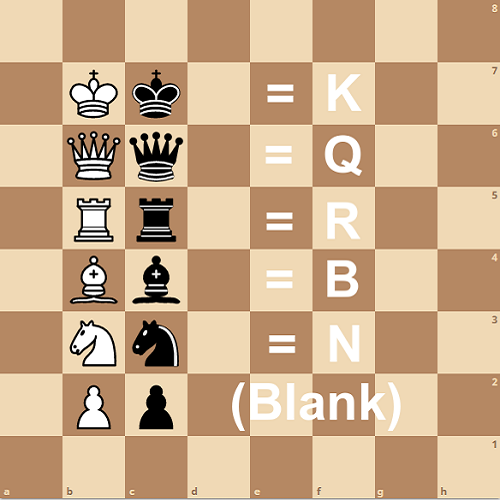
Denoting the destination square
Every square on the chess board can be recognized by just 2 characters: a letter and a number.
The letters represent the columns on a chess board. Columns on the board are officially and henceforth referred to as files.
The numbers represent the rows on the board. Rows on the board are officially and henceforth referred to as ranks.
Starting from the left hand side of the white piece player, the columns/files are denoted by lowercase letters a, b, c, d, e, f, g & h.
Starting from the side of the white piece player, the rows/ranks are denoted by numbers 1, 2, 3, 4, 5, 6, 7 & 8.
Here is a visual representation for clarity.
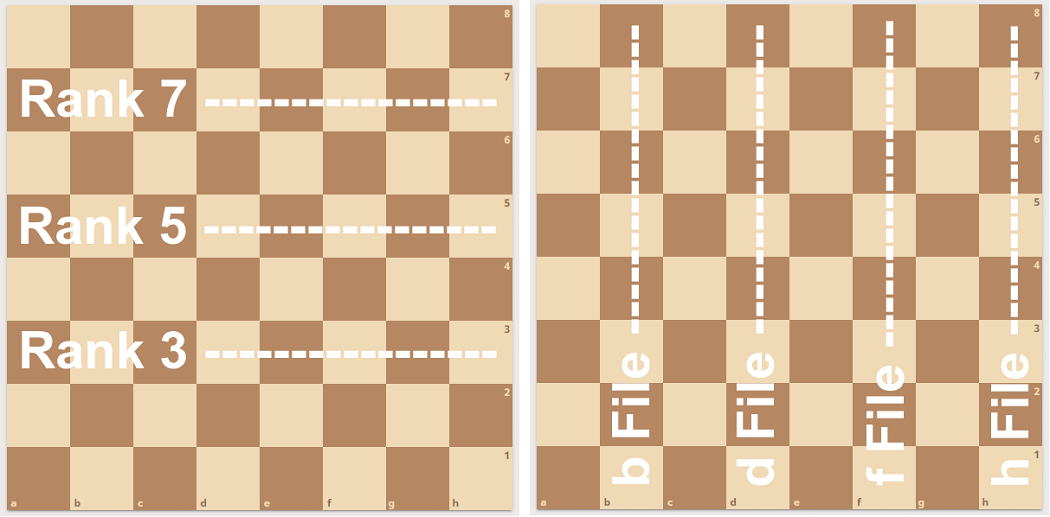
Combining both - the letter and the number - gives us a unique name for every square on the board. For example, a1 represents the very bottom left square on a board, when viewed from white side. Here is a visual representation for clarity.
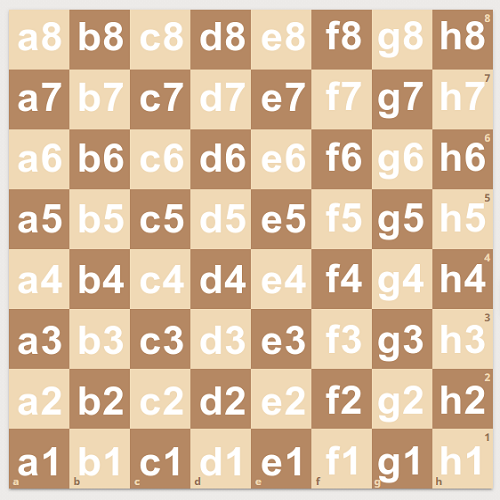
Recording the move
Now, to record any chess move, you just write the letter of the piece moved, and the square it has been moved to. For example, Nf3 will represent Knight moving to square f3. while simply writing f3 will represent the f pawn moving to f3. To not confuse pawn moves with piece moves, remember, moves of all pieces start with a CAPITAL letter, while pawn moves start with lowercase letter.

Denoting other aspects of a move
Now that we know how to record a single move, let's learn how to record other aspects of a move. These are namely, captures, castles, pawn promotions and checks & checkmates.
Denoting Captures
When a piece is captured, an 'x' is added in between the denotation. For example, Qxb6 denotes Queen captures at b6, while a simple Qb6 will denote Queen to b6.

Whenever a pawn captures a piece, we denote the initial file of the pawn along with the destination square. This not only helps in clarity but also removes ambiguity. For example, in the picture below, xd5 is not sufficient to denote the move. Therefore, we write exd5 instead.

While denoting en passant captures, we don't note the square of the captured pawn. We instead note the final square of moved pawn. For example, consider the following picture.
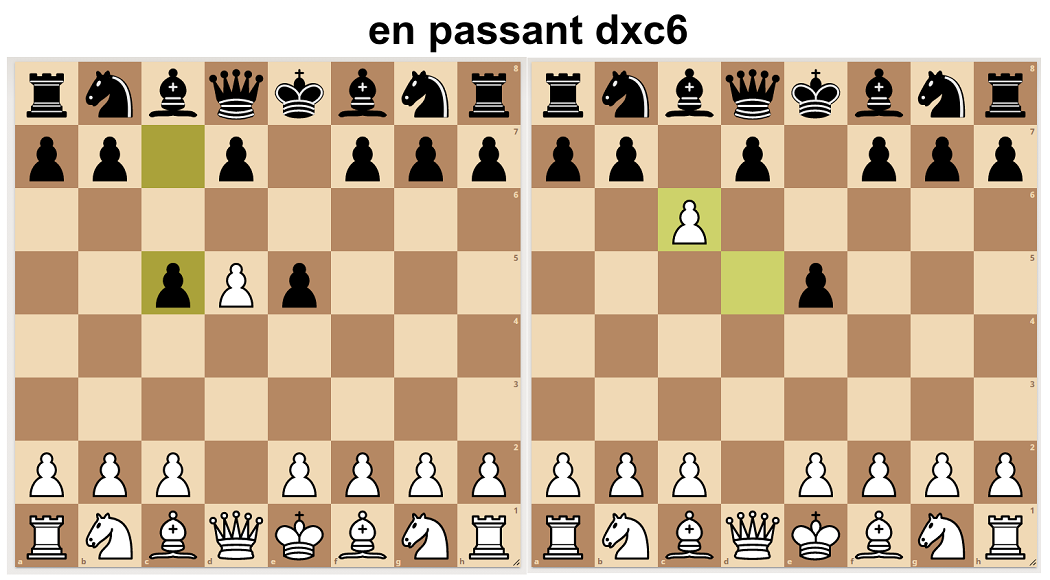
We write dxc6 to denote d pawn en passant captured the c5 pawn.
Denoting Castles
Castling on the King side is denoted by O-O.
Castling on the Queen side is denoted by O-O-O.

Denoting Pawn Promotions
When a pawn is promoted, we add an '=' sign and the letter of the new Piece to denote the promotion For example, d8=Q repesents d pawn moving to d8 and promoting to a Queen.

Denoting Checks & Checkmates
A plus sign '+' is added at the end of the move to denote a check. For example: Qh5+ represents Queen to h5 Check. Either a hashtag '#' or double plus signs '++' are added at the end to denote a checkmate. For example: Qh4# denotes Checkmate.
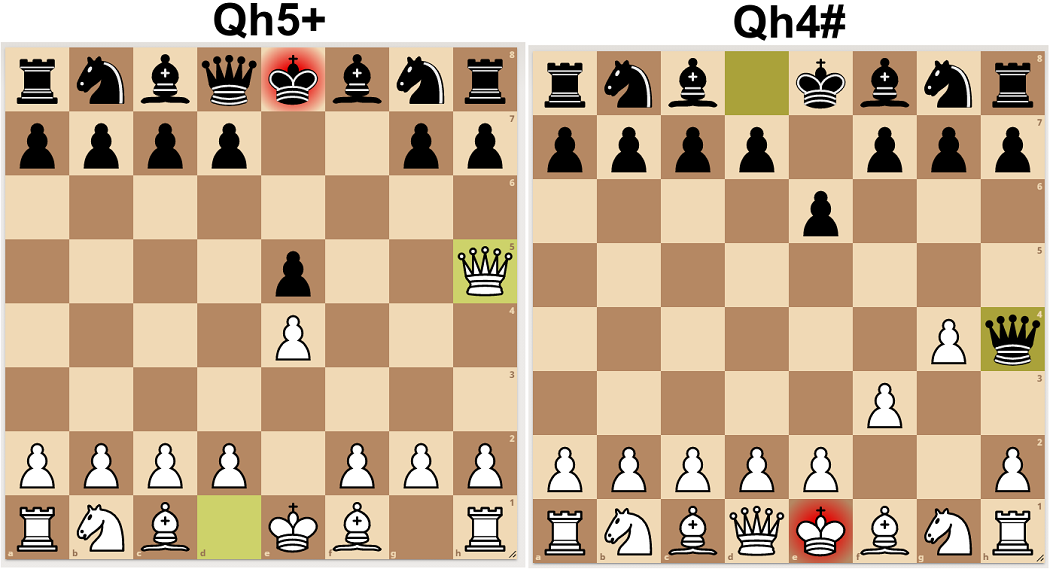
Preventing Ambiguity
Sometimes, all of the above is still not enough to clarify which piece has been moved. For example, consider the move Re1 in the following picture.

Since both rooks can be moved to e1, we have to clarify which rook it is. We first consider the file of the moved piece. Thereby, we write Rfe1 or Rce1 to denote which rook was moved.
However, when the files of both pieces are the same, we clarify using the Rank. consider the following pic:

Both knights can move to d2 and are standing on the same file. Here, we clarify the rank of the Knight, by denoting N3d2 or N1d2.
In special cases we can have 3 of the same piece that can move to the same square. Here, we need to denote both the file and the rank of the piece moved. Consider the following situation for example:

All 3 queens can move to a1. We denote the three specific queen moves as: Qaxa1, Qc3xa1, Q1xa1.
Denoting the Whole Game
Now that we know how to denote single moves, it's time to denote a whole game.
Numbering Moves
We simply write the number of the move, followed by the moves played. For example:
1. e4 e5 2. Nf3 Nc6 3. Bc3 Nf6
Note that 2 moves after each number are recorded because both white and black play their move.
If you have to denote a move without the other sides move, we do it as follows:
For a white move, we can simply write: 10. Qf5
For a black move, we add '...' before the move: For example, 22...Rh6# cannot be prevented in the following game.

Denoting Results
There is no specific notation for a player resigning. Sometimes it is mentioned in words "white resigns" or "black resigns".
A 1-0 at the end of the game will denote a white win, 0-1 denotes a black win, and 1/2-1/2 denotes a draw.
Interpreting analysis symbols
You may have seen exclamation marks and question marks after some moves. These denote the brilliancy or stupidity of the played move. We interpret them as follows:
!! - Brilliant Move
! - Good Move
? - A Mistake
?? - A Blunder
!? - Interesting move, but not a clear advantage. This stirs up the game.
?! - A dubious move, but might have something in it. If it doesn't destroy you, it will destroy the opponent!
Adding Comments and potential lines
To discuss various lines that could have been played in a game, we add them in a parenthesis next to the move where the line breaks away from the actual game. For example, consider the following games.
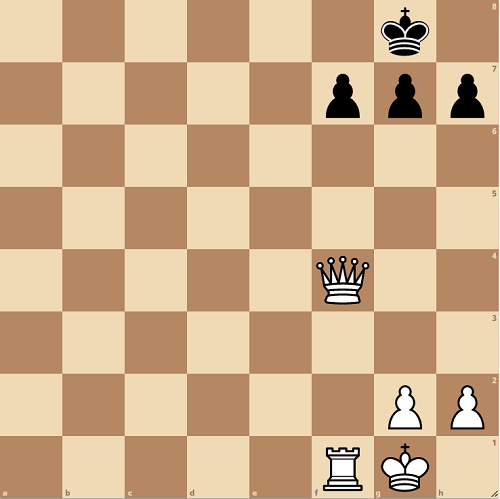
We can write analysis line as: have 20. Qb8# (20. Qxf7+ Kh8 21. Qf8#)
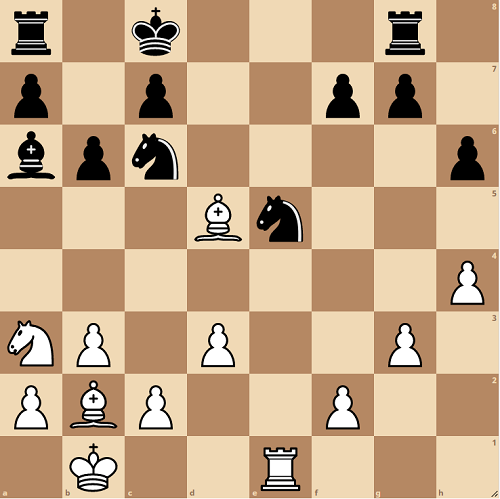
Analysis: 15. Bxe5 Bb7 (15...Nxe5 16. Bxa8) (15. Rxe5 Nxe5 16. Bxa8)
Sample Game
Here below is a sample game you can read to check out your understanding of chess notations.
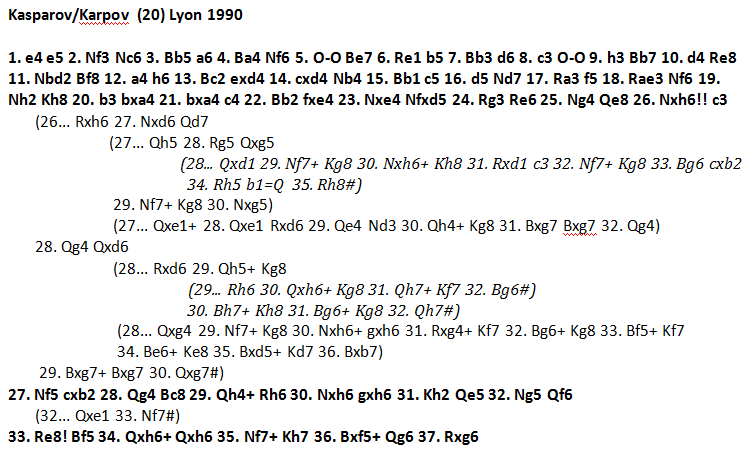
Here is a link to a video of the above game, for visual clarity.
